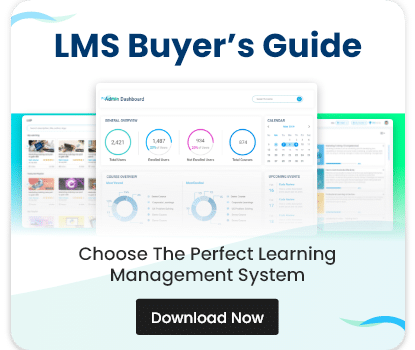Steps to Organize an Effective LMS Demo
A successful LMS demo requires careful planning and execution. Here are the key steps to organize an effective demo that highlights both the technical and functional capabilities of the system.
Pre-Demo Preparations
Define Objectives and Key Metrics
Before the demo, it’s essential to:
-Set Clear Goals: Identify what you want to achieve with the demo, whether it’s testing the platform’s scalability, assessing user interface usability, or evaluating integration capabilities.
-Prepare Metrics: Determine key performance indicators (KPIs) to evaluate the success of the demo. These might include system response times, user engagement levels, and the ease of course management.
Configure the Demo Environment
Ensure that all technical requirements are met by:
-Setting Up Demo Accounts: Create multiple user accounts with different roles to demonstrate various functionalities.
-Populating with Sample Data: Load the demo with realistic course content, user profiles, and performance data to simulate an authentic learning environment.
-Testing Integrations: If the LMS integrates with other systems, such as HR platforms or communication tools, conduct thorough testing to ensure smooth operation during the demo.
During the Demo
Walkthrough of Key Features
During the demo, focus on:
-Live Navigation: Showcase the LMS interface, demonstrating how users can easily access courses, complete assignments, and track their progress.
-Interactive Sessions: Engage the audience by allowing them to participate in live training sessions or interactive modules.
-Real-Time Reporting: Highlight the analytics and reporting features that provide actionable insights into learner performance and engagement.
Address Technical Questions
Be prepared to answer technical queries about:
-System Compatibility: Explain how the LMS works across different devices and operating systems.
-Integration Capabilities: Discuss how the platform can integrate with existing enterprise systems to streamline operations.
-Security Measures: Outline the security protocols in place to safeguard user data.
Post-Demo Evaluation
Gather Feedback
After the demo, collect feedback from all participants to understand their experience. Use surveys or follow-up meetings to capture insights on:
-User Experience: What worked well and what could be improved.
-Technical Performance: Any issues related to speed, responsiveness, or compatibility.
-Overall Satisfaction: Whether the demo met the initial objectives and expectations.
Analyze and Act on Feedback
Review the feedback and:
-Identify Improvement Areas: Determine if any technical adjustments are necessary before a full-scale rollout.
-Plan Next Steps: Based on the demo results, decide whether to proceed with the LMS or explore alternative solutions.



















